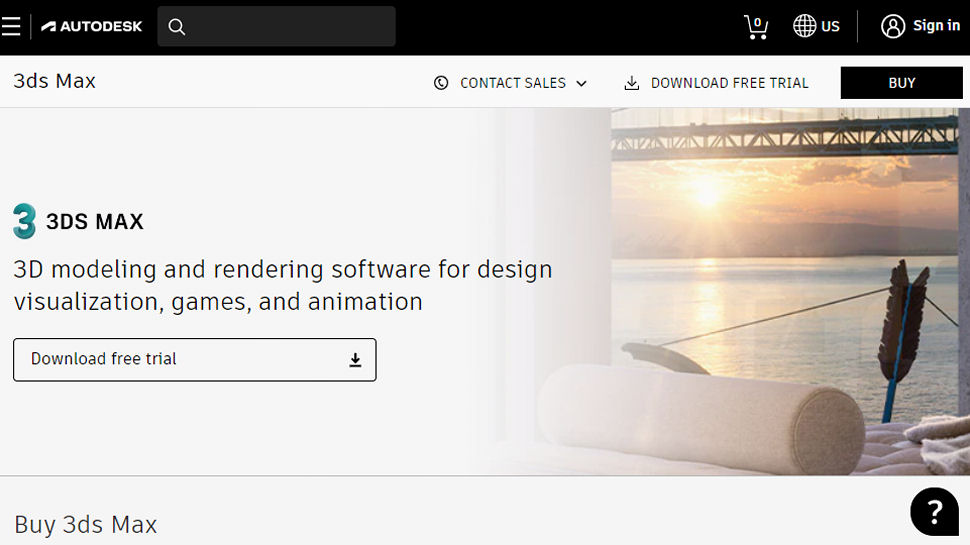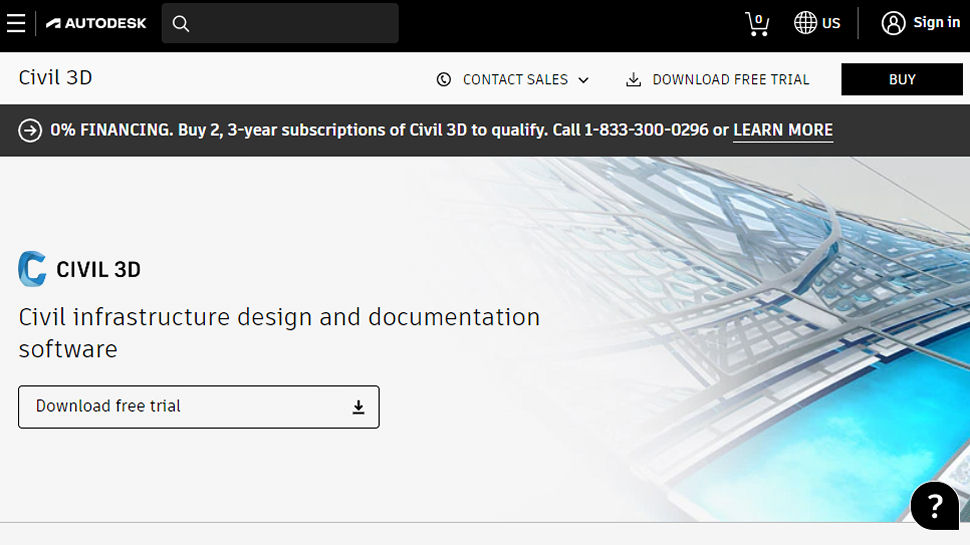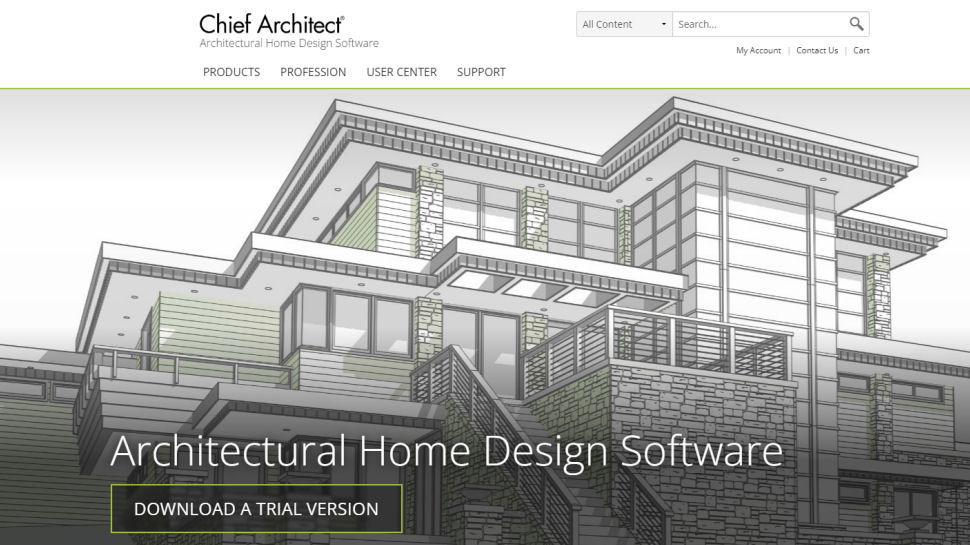best software for 3d architectural drawing
Best compages software of 2022: Free and paid, for Windows, Mac, Linux, and online

The best architecture software enables the cosmos of digital designs and redesigns, for architectural projects such equally buildings and models.
Architecture software has become essential in the modern digital globe, making it easier to describe upwardly, save, and print plans for your designs. Additionally, while there are various digital blueprint packages out there, architects need something more dedicated than normal graphic design software.
This is where compages software really comes into its own, assuasive architects to not just design their vision simply and easily, but also edit, delete, and add at will. Additionally, for the more serious projects you can also include engineering data to ensure your structures are viable in a real-world context.
Architecture software can also exist used to set up up workflow direction and business relationship for project management tasks, some of which are included, integrated, or can simply be exported into another program.
However, dedicated software for architecture is even so quite niche, every bit the programs have to be pretty comprehensive, and there are only a few vendors who specialize in this expanse.
Here then nosotros'll await at the all-time architecture software on the market, and include some additional options worth considering.
Additionally, we've highlighted the best drawing and painting software and the best laptops for engineering students.
- We've highlighted the all-time drawing and painting software.
- We've likewise featured the best laptops for engineering students.

AutoCAD has long been a staple of constructional engineers and architects, and Autodesk has built in specific building design and architecture toolkits into its staple AutoCAD software.
To speed upwards the process, it provides pre-built objects for walls, doors and Windows, and mechanisms for creating elevations, sections and plans from model geometry.
The only large caveat to this application is how firmly aligned to older working practices information technology is, where many in the building trade are moving towards a Building Information Modelling awarding (BIM) future. For those customers Autodesk offers Revit.


3D Studio existed before Windows 3.x and was i of the first tools to offer hardware accelerated rendering of 3D images. Its value is in creating visuals and wing-through animations to promote a project, rather than pattern it from the flooring upward.
Along with the vanilla 3DS Max, you can choose iii special flavors designed for Media work & Amusement, Production design & manufacturing, and an Architecture, Engineering and Structure collection.
That last drove includes products we'll mention separately, including AutoCAD, Civil 3D, and Revit. Those are just the major applications, as it also has tools for structural analysis, steel detailing, building performance analysis and fifty-fifty vehicle path calculations.


Modelling and drawing are only two of the functions needed from CAD by architects and builders. There are many others, many of which are addressed past Civil 3D from Autodesk.
Designed to piece of work with other Autodesk products, specifically AutoCAD, Revit and 3DS Max, it offers a design and documentation pipeline for Edifice Information Modelling (BIM) workflows.
One useful ability is the integration of survey images with terrain modelling, roads, service schematics and constructional geometry. All these elements are placed into a single highly annotated package. Assuasive engineers to focus on their specific area, but as well run across how their changes might interfere with others.


We first encountered CATIA over thirty years ago, when the creators Dassault Systèmes started to promote their in-house solution to other companies.
Originally conceived to precision model military hardware, it can hands handle complex architectural issues and generate finely detailed models.
Where many CAD systems added collaboration and security controlled distribution later, CATIA had this from its inception. And, more recently it expanded those coordination features to embrace Cloud functionality.
With such powerful and fully featured software Dassault don't mail service exact pricing. Instead, you have to inquire for a quote. That hints at a high cost per seat, although the number of companies that utilize it besides indicates that it is probably worth what they're demanding.


Essentially more than homes are built than giant part complexes or retail parks, and that is the forte of Principal Architect.
This tool can exist utilized by homeowners wanting to remodel, domicile builders, interior designers and architects creating unique residences.
Depending on specific needs there is a production selection that begins very modestly and focuses, for case, on Interiors. Or, you can spend much more on their Premier product that handles consummate buildings with all their details.
Using Premier or Architect Interiors you to rapidly construct 3D models of outside and interior spaces so project those into second plans and elevations.
For more information, read our full Primary Architect Dwelling Designer Suite review.


Part of a whole new generation of Autodesk products aimed specifically at architectural studios that handle complex projects and need BIM (Building Information Modelling), Revit non just enabled the design and modelling of a building, simply the coordination of multiple engineers collaborating on the same scheme.
Designers using Revit are working with objects, non a vector between two points, and that allows them to work quickly and with conviction.
Withal, even if they both use a command line interface, this isn't like AutoCAD. And, those coming from that discipline might struggle initially with the transition. Once they've scaled the steep learning curve, Revit can offer a competitive edge over those that are just using traditional design applications.


Most CAD applications are great with directly lines and less marvellous with anything curved. Rhino was designed from inception to handle curved lines, meshes and NURBS surfaces of high complexity, like those in the features of a human face or the sweeping curves of a super-car.
For architectural design, Rhino tin can easily model the complex intersections of curved covering or whatever part of the structure that isn't inherently straight. As a platform, it isn't a specialised tool. Instead, it caters for add together-ins and the Grasshopper visual programming system to enable information technology to exist tailored to specific tasks.
This makes Rhino a highly flexible tool that can be tweaked to automate complex modelling and detailing operations for those projects that need them. Unusually for CAD software, you are not forced to upgrade to the next release and upgrades generally toll one-half that of a new license.


Originally a Google-backed project, Sketchup is now owned and developed past Trimble, who release a new version at least once a twelvemonth.
As a start betoken for anyone entering 3D modelling, Sketchup is as easy every bit CAD gets. Subsequently a few like shooting fish in a barrel to follow tutorials, designers should be able to work rapidly to construct complex solid geometry using it.
The gratis release has made Sketchup very popular, generating a large and agile community of Sketchup users on hand to assist the inexperienced. The user-base has likewise contributed to an all-encompassing object library, a vast resources of pre-constructed parts to drop into any project.
It might not be suitable for designing a building entirely, but it is an first-class tool for rapidly prototyping a design when information technology is still at a conceptual phase.
Sketchup offers a complimentary tier, although it has express features.
To find out more than, read our full Sketchup review.
Other architecture software options to consider
While nosotros've featured some of the nigh powerful and popular AutoCAD and 3D pattern software programs in this roundup, specially for use in designing buildings and other architectural interests, in that location are plenty of culling options to consider. Some of these are worth looking at because they better serve as an introduction for beginners, while others are notable for being complimentary while retaining useful features.
TurboCAD Palatial is a peculiarly good choice for beginners and intermediate users. It may non offer as many features as some of the other products on this page, but that's to be expected with its lower price tag. All the same, information technology may exist a good piece of software to try in society to only get used to basic functions, though be warned that there are no command line options here (which more advanced programs tends to offer).
FreeCAD is a gratis open source 3D modeler, which is especially good for contrary engineering science models and seeing how changing parameters can affect the whole design. While it's not and then feature-rich as the large paid-for programs, it is a well-supported platform and it does actually have some circuitous features to explore. Furthermore, it offers cross-platform support, so yous can use it regardless of whether your PC is running Windows, macOS, or Linux.
SolidWorks is a powerful CAD plan that manages to strike a rest between ease-of-use and advanced features. There'due south withal a learning curve, though it'southward non overly steep, and some of the overnice touches hither include a wizard that looks for structural weaknesses in designs. However, information technology is a full general 3D modeling tool rather than specific to architecture itself, so it might be better used for materials modeling rather than buildings. Notwithstanding, this product carries a lower toll tag than many of the rivals nosotros've featured hither, so may exist worth a await.
Tinkercad is another general 3D modeling tool that gets a mention considering it'south gratuitous to use and targeted at beginners. And then if y'all lack confidence with tackling k projects for the moment, Tinkercad could be something to get you used to some of the nuts and features y'all might later on develop more than avant-garde grooming in. And because there's no charge to use it, the program won't burn a hole in your pocket – just treat it like a design sandbox to grow your skills.
CorelCAD is a dedicated CAD program from the ubiquitous Corel design team. It'southward a 2D drafting and 3D design platform that can be easier to use than some of the more complex products featured here. As yous'd expect from Corel, though, this is a good all-rounder that aims to join a strong toolkit – not least in terms of the creation and manipulation of vector graphics – at a price that is less than half of the more expensive programs featured hither. It too supports .stl files for 3D printing.
Additionally, we've featured the best AutoCAD to PDF converters , the best PDF to AutoCAD converter and the best 3D file converters .
Source: https://www.techradar.com/best/best-architecture-software
0 Response to "best software for 3d architectural drawing"
Post a Comment